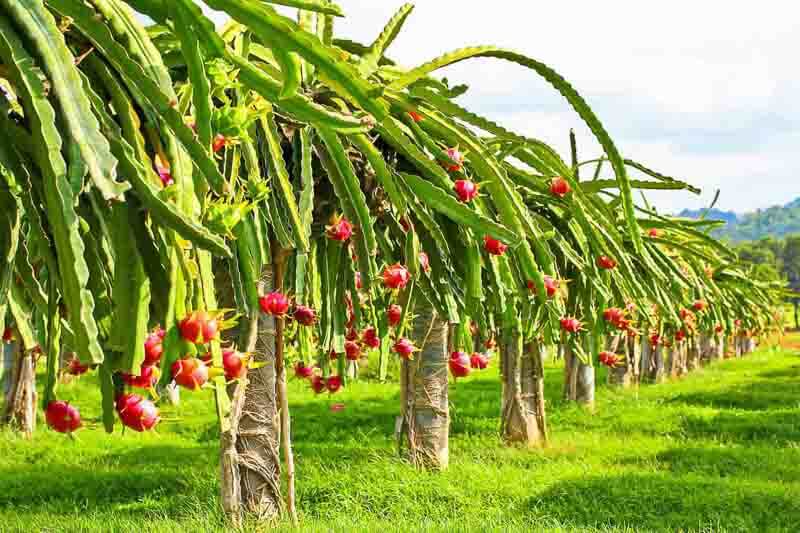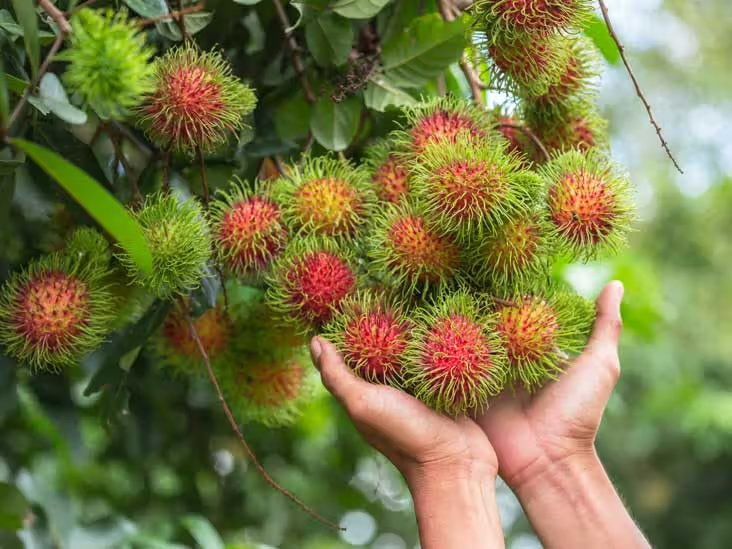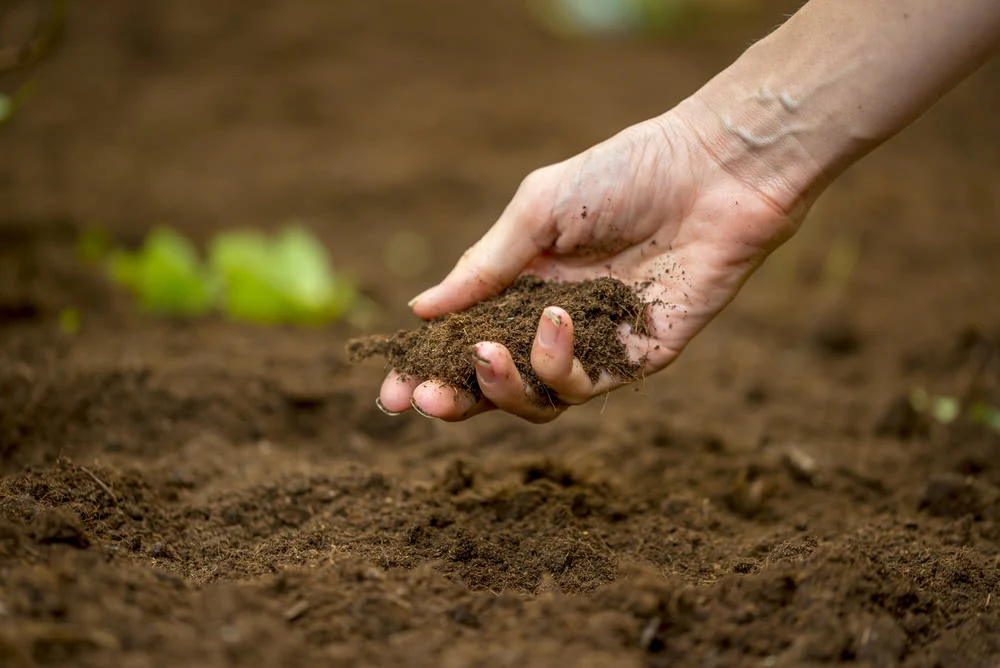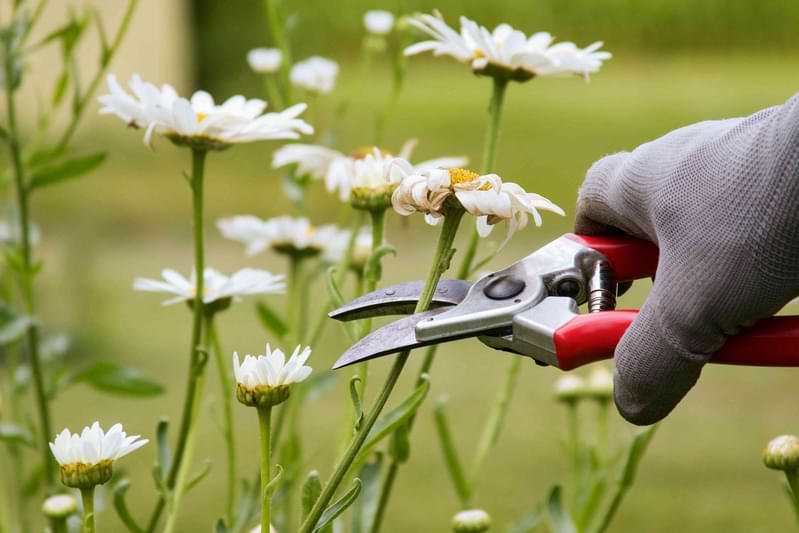Growing bizarre fruit is a rewarding and exciting endeavor for any gardener or horticulture enthusiast. Whether you’re interested in impressing your friends, exploring unique flavors, or simply enjoying the novelty of cultivating something unusual, bizarre fruits offer a fascinating way to expand your gardening repertoire. In this guide, we’ll cover some of the most unusual fruits you can grow, along with tips on how to successfully cultivate them in your garden.
Choosing the Right Bizarre Fruits
Before diving into the growing process, it’s important to choose the right type of bizarre fruit for your garden. Some unusual fruits are better suited for certain climates and soil types than others. Here are a few examples of bizarre fruits you might consider:
- Dragon Fruit (Pitaya): Known for its vibrant pink skin and speckled flesh, dragon fruit is a cactus species that thrives in warm, dry climates.

dragon fruit farming - Buddha’s Hand (Citrus medica): This fruit resembles a hand with multiple fingers and has a strong citrus fragrance. It’s primarily used for zest or as a decorative piece.
- Horned Melon (Kiwano): With a spiky orange exterior and bright green flesh, the horned melon is both visually striking and nutritious. It grows best in warm, tropical climates.
- Miracle Fruit (Synsepalum dulcificum): This small red berry is famous for temporarily altering taste perceptions, making sour foods taste sweet. It requires a warm, humid environment.
- Rambutan: This hairy red fruit is similar to lychee and is native to Southeast Asia. It needs a tropical climate to thrive.

Preparing Your Garden for Bizarre Fruits
Once you’ve selected the bizarre fruits you’d like to grow, the next step is to prepare your garden. The key to success lies in understanding the specific needs of each fruit and providing the right conditions.
- Soil Preparation:
- pH Levels: Most bizarre fruits prefer slightly acidic to neutral soil. Test your soil’s pH and amend it as necessary.
- Drainage: Ensure that your soil has good drainage, as many unusual fruits are prone to root rot in waterlogged conditions.
- Nutrient Content: Enrich the soil with organic compost or well-rotted manure to provide essential nutrients.

Image Taken from:https://www.ugaoo.com/blogs/gardening-basics/ways-to-prepare-healthy-garden-soil
- Climate Considerations:
- Temperature: Some bizarre fruits, like dragon fruit and horned melon, require warm temperatures to thrive. If you live in a cooler climate, consider growing these fruits in a greenhouse.
- Humidity: Tropical fruits like rambutan and miracle fruit need high humidity levels. You can increase humidity by misting the plants or using a humidifier in enclosed spaces.
- Sunlight: Most bizarre fruits need plenty of sunlight, so choose a spot in your garden that receives at least six hours of direct sunlight each day.
- Planting Techniques:
- Seedlings vs. Seeds: For faster results, consider starting with seedlings rather than seeds. However, growing from seeds can be more economical and rewarding.
- Spacing: Give each plant enough space to grow by following the specific spacing requirements for the fruit you’re growing. Crowded plants can lead to poor air circulation and increased disease risk.
Caring for Your Bizarre Fruits
Proper care is crucial for the successful growth of bizarre fruits. Here are some general tips to ensure your unusual fruits flourish:
- Watering:
- Most bizarre fruits prefer consistent moisture, but be careful not to overwater. Allow the soil to dry slightly between waterings to prevent root rot.

- Most bizarre fruits prefer consistent moisture, but be careful not to overwater. Allow the soil to dry slightly between waterings to prevent root rot.
- Fertilizing:
- Regular fertilization is essential for healthy growth. Use a balanced fertilizer according to the specific needs of your fruit. For example, dragon fruit benefits from a high-potassium fertilizer.
- Pruning:
- Regular pruning helps to maintain the shape of the plant and encourages better air circulation, which can reduce the risk of disease.

Pruning Plants
- Regular pruning helps to maintain the shape of the plant and encourages better air circulation, which can reduce the risk of disease.
- Pest Control:
- Monitor your plants for common pests such as aphids, mites, and caterpillars. Use organic insecticides or introduce beneficial insects like ladybugs to keep pests in check.
- Harvesting:
- The harvest time will vary depending on the fruit. Pay close attention to color changes, size, and texture as indicators of ripeness. For example, dragon fruit is ready to harvest when its skin turns bright pink.
Final Thoughts
Growing bizarre fruits is not only a fun and rewarding experience, but it also allows you to explore new flavors and textures that aren’t typically found in your local grocery store. By choosing the right fruits for your climate, preparing your garden carefully, and providing diligent care, you can successfully cultivate a variety of unusual fruits that will amaze your friends and family.
Whether you’re aiming to create a unique fruit salad, add an exotic touch to your garden, or simply satisfy your curiosity, growing bizarre fruits offers endless possibilities. So, roll up your sleeves, get your hands dirty, and embark on this exciting gardening adventure!


